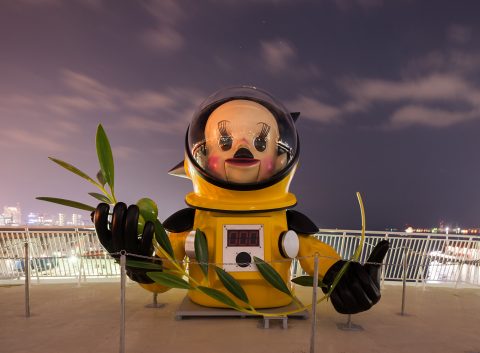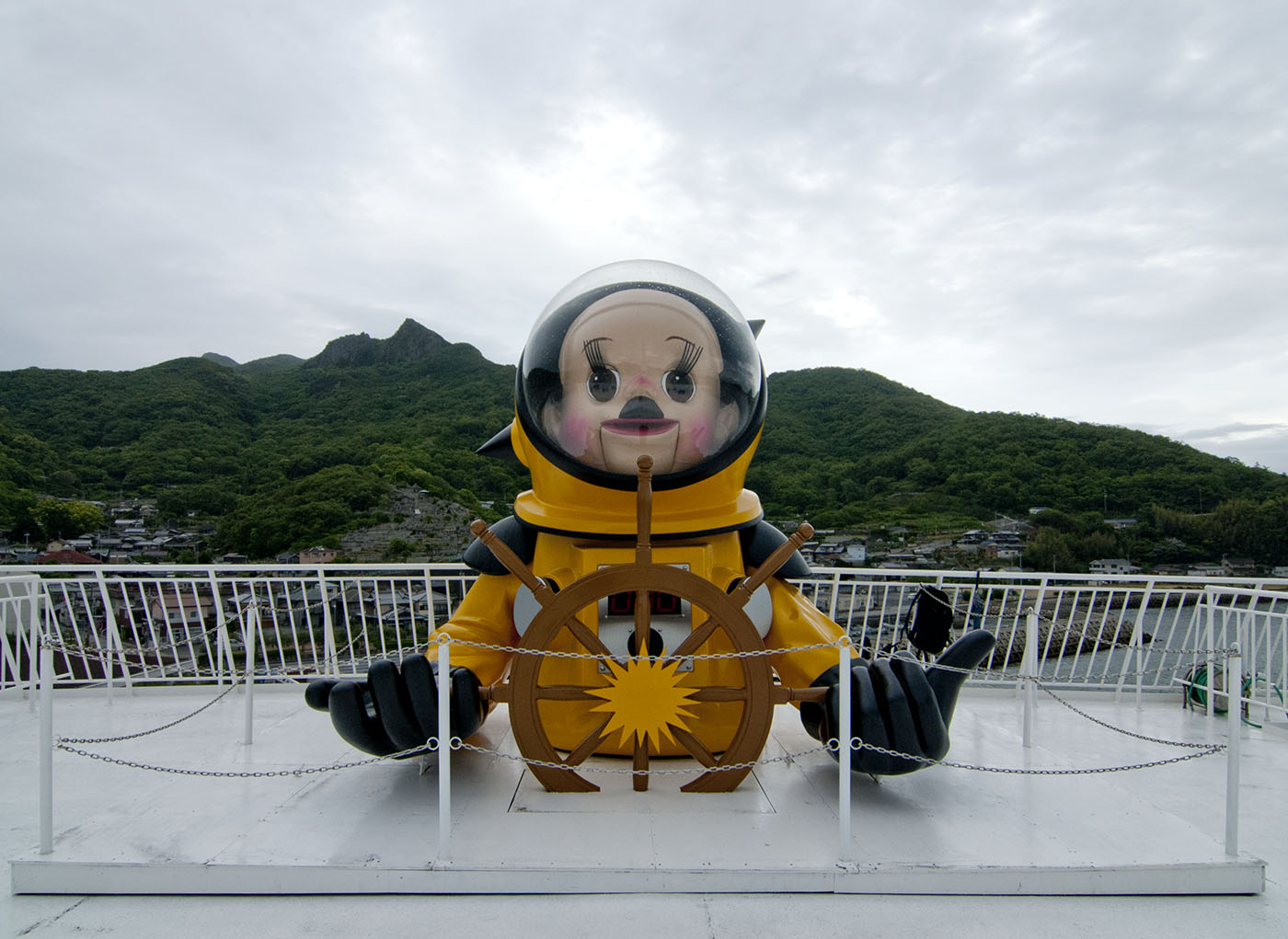Jumbo Torayan [2013]
Boatman Leading to “Hope of the Island”

Jumbo Torayan (2013) is a huge bust o f the character Torayan (2004-) installed on the rooftop observation decks of the Jumbo Ferry connecting Kobe and Takamatsu to Shodoshima Island. It was produced when Shodoshima participated in Setouchi Triennale 2013 for the first time.
At the festival, Kenji Yanobe tried to make the whole of Shodoshima a stage for a magnificent story by using his own works. In addition to installing THE STAR ANGER (2012) at the former site of a lighthouse at Sakate Port and ANGER from the Bottom (2013) at the former site of an old well on a height at the foot of Dounzan Mountain, he planned to make a large wall painting in a waiting room at Sakate Port. Miki Okamura drew Legend of Shodoshima (2013) on that wall. In the project, Jumbo Torayan was created to connect not only Honshu and Shikoku to Shodoshima, but also to connect the story to reality.
Torayan is an important character in Yanobe’s works in the 2000s. The work was birthed when Yanobe attached a small mustache and a combover head on his father’s ventriloquist puppet, dressed it in Mini Atom Suit (2003), and named it “Torayan.” Yanobe’s father, who was a fan of the Hanshin Tigers baseball team, started ventriloquism after his retirement. Since then, the puppet has played a key role as a spokesman and a mediator on behalf of Yanobe.
In addition, Yanobe frequently uses “Noah’s Ark” from Genesis as a motif in his works including the picture book Torayan’s Great Adventure (2007), and the printing on the inner wall of the observation deck. He also made theJumbo Ferry resemble “Noah’s Ark,” and Shodoshima resemble “the land of hope” after the flood. Since Shodoshima is originally famous for olives, it was the perfect location, as, in“Noah’s Ark,” a pigeon had brought back an olive leaf to signal that the flood had subsided.
Shodoshima is a historical and venerable island that appears in “Kuniumi” from Kojiki (An Account of Ancient Matters), but it is also a symbolic island that represents the other islands in the Setouchi, left behind the transport network due to the lack of a connection bridge between Honshu and Shikoku. It can be said that Yanobe tried to convert the island into the “island of hope” where beautiful Japanese culture has been preserved through powers of art and narratives. There are two types of Jumbo Torayan installed on the observation deck of two Jumbo Ferries; one has a rudder, and the other has an olive leaf. They lead the passengers of the ferry to Shodoshima—the “island of hope.”
It is rare for public art to be installed aboard ships. Despite the harsh environment surrounding the artwork, including the sea breeze, the works were permanently installed and now are icons of the Jumbo Ferries.
